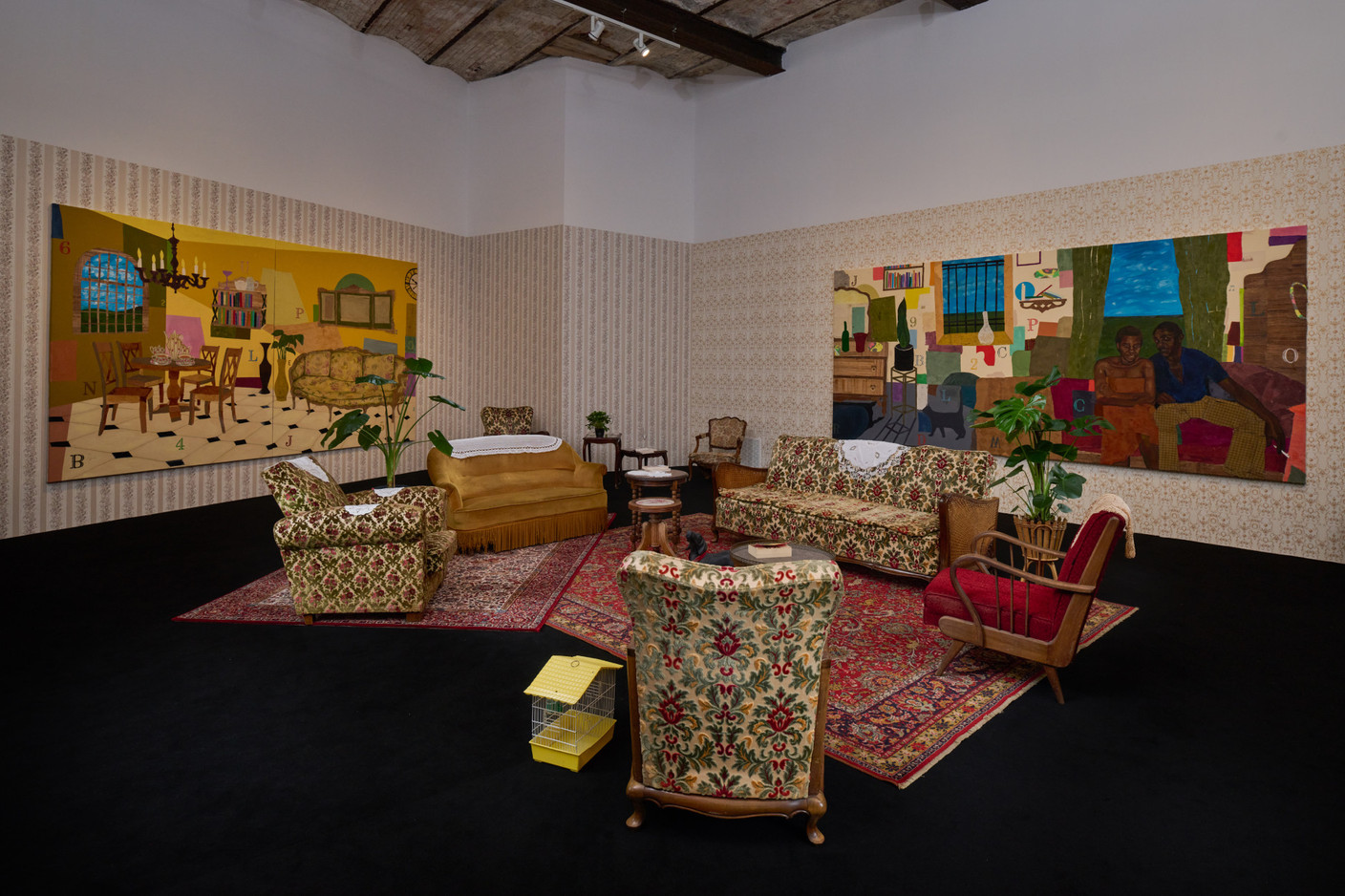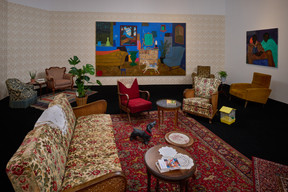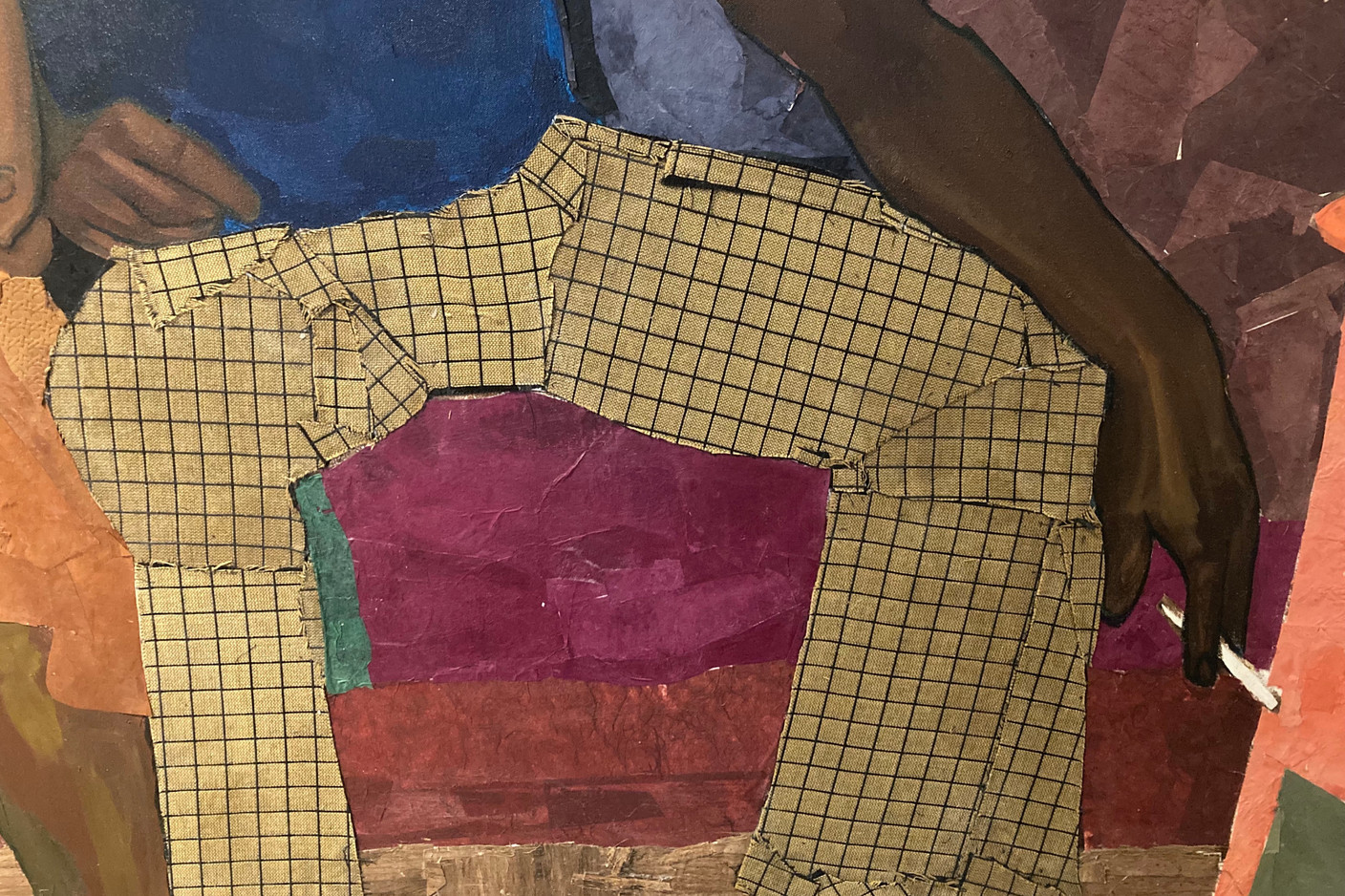Originally from Brooklyn in New York, Khalif Tahir Thompson is still what we call an emerging artist. Just 28 years old, he is currently completing his master’s degree at Yale University.
“I started painting when I was 16, but I’ve always been involved in art education programmes,” recalls Thompson. As soon as he began his specialised art studies, he was spotted by collectors and gallery owners. This was followed by a solo exhibition at the Zidoun-Bossuyt gallery in Dubai, and his first solo show in Europe at the gallery in Luxembourg. “It’s a bit of a snowball effect,” says the artist, who is keeping his feet firmly on the ground. “I’ve been very lucky, and for the moment I’ve been able to bounce back from opportunities and occasions that have been offered to me, but I still need to build up a more substantial body of work.”
A mature body of work
For all that, his painting is already surprisingly mature and accomplished for a young man of his age and experience. His paintings are quite large and narrative. The subjects are mainly portraits of members of his family, set in familiar domestic interiors. “I’ve always been attracted to portrait painting, figurative painting and, more particularly, portraits of black people,” explains Thompson. “The starting point for these paintings are photos from albums that belonged to my grandmother. They are family photos, most of which date from the late 1980s.” The people represented are the artist’s uncles, cousins, parents, brothers and sisters.
But beyond a simple portrait of an interior, an emotional relationship is forged between the viewer and the portrait. It’s also a question of heritage and transmission. “I’m interested in images that create links and pay tribute in an honourable way. It’s also about creating empathy, psychological connections,” explains the artist. The paintings of Lucian Freud and Alice Neel are not far from Thompson’s spectrum of influence.
Compositions that incorporate collage
As well as the painted elements, there are also a number of heterogeneous elements, such as pieces of cut paper and leather. “I’m a collector by nature, and I have a whole range of materials in my studio,” confides the young man. On top of that, he makes his own papers from a variety of raw materials. “These collages bring a different energy and experience to the painting. They carry a certain warmth and their own history. They reinforce the tactile dimension of the image. Material and form reinforce each other, creating a new feeling that is linked to both the image and the material.”
Thompson also includes letters and numbers in his compositions. These elements have no particular meaning; they are there to open up another dimension and the imagination. While remaining enigmatic, these typographical elements catch the eye and create a recurrence from one canvas to the next. “This graphic introduction creates a dialogue within the work,” explains the painter. “These are tools I use to attract and hold the viewer’s gaze as they try to decode it and find meaning. It’s a formal tool that enters into dialogue with the other elements of the painting.”
Finally, it’s worth highlighting the unique way in which the works are hung at the Zidoun-Bossuyt gallery. The works are hung on the wall, but in a setting that includes carpets, sofas and coffee tables, in keeping with the slightly old-fashioned domestic atmosphere of Thompson’s paintings. It’s an illusion that extends into the viewer’s space, who is invited to physically enter these canvases and add his or her own story to them.
Khalif Tahir Thompson: Who Knows Where The Time Goes, until 11 November, , 6 rue Saint-Ulric, Luxembourg.
This article was first published in French on . It has been translated and edited for Delano.
















